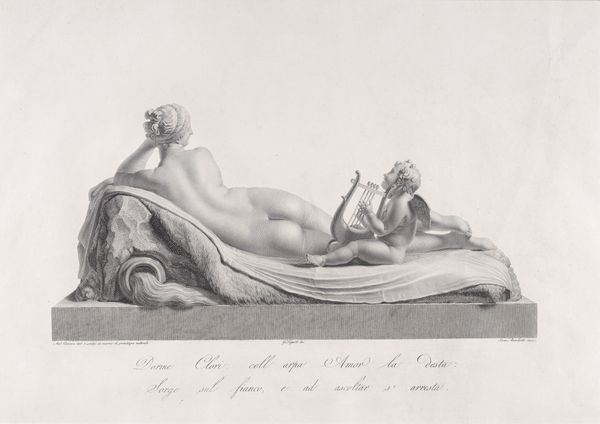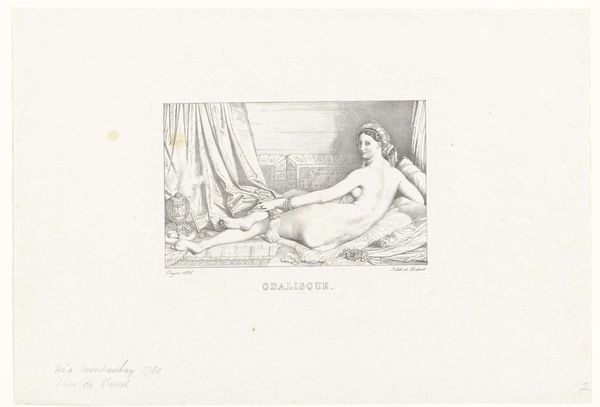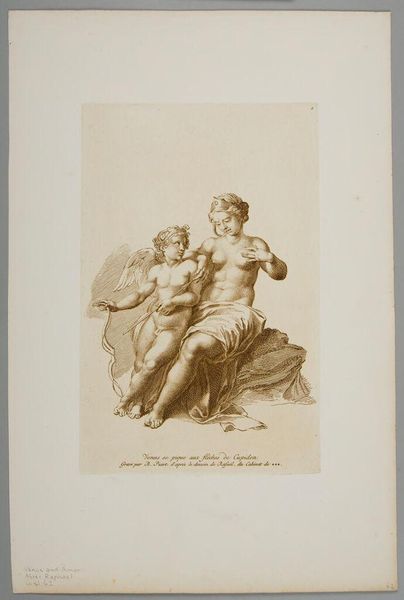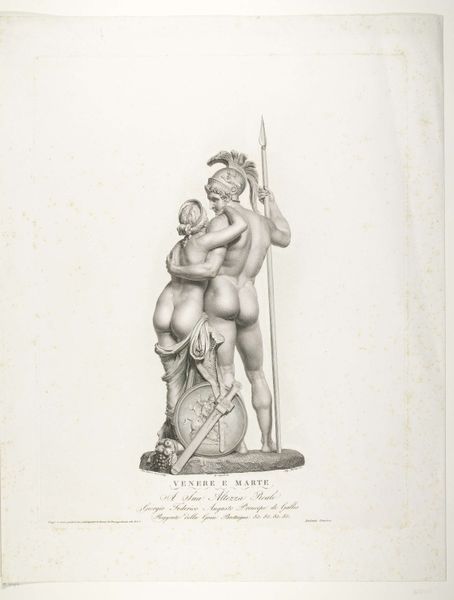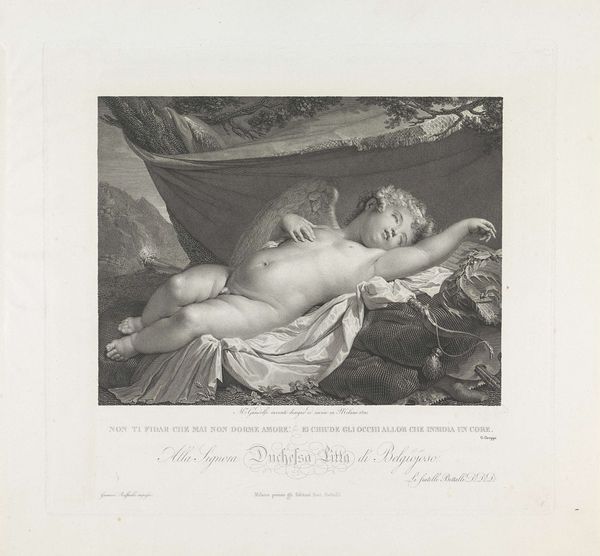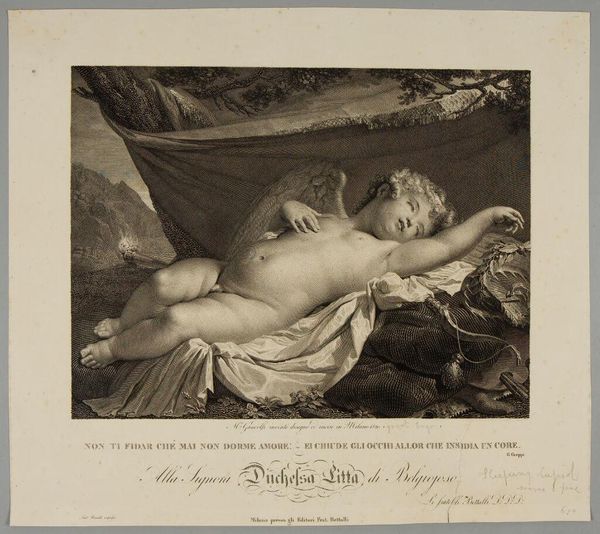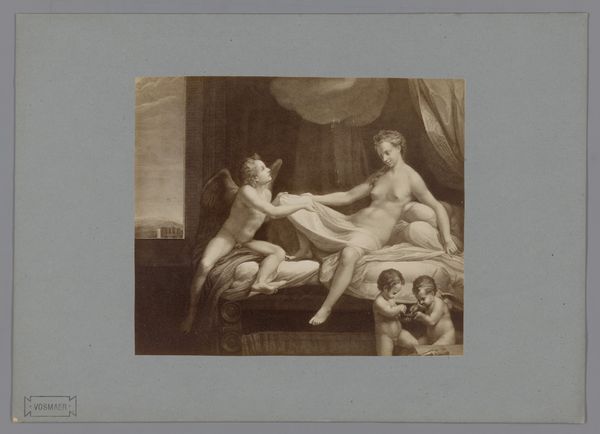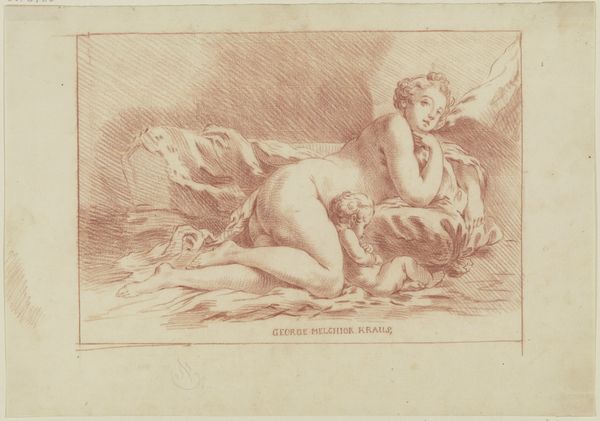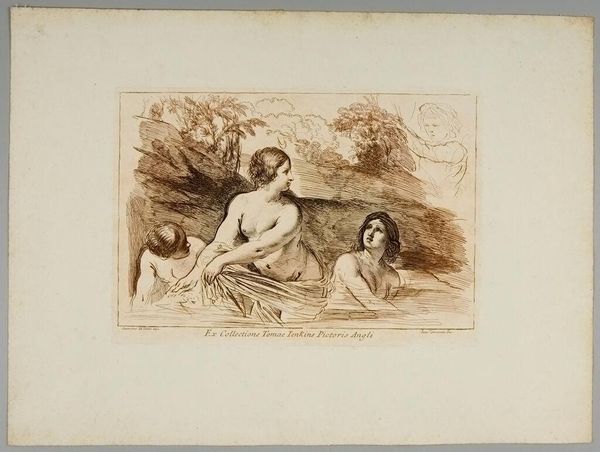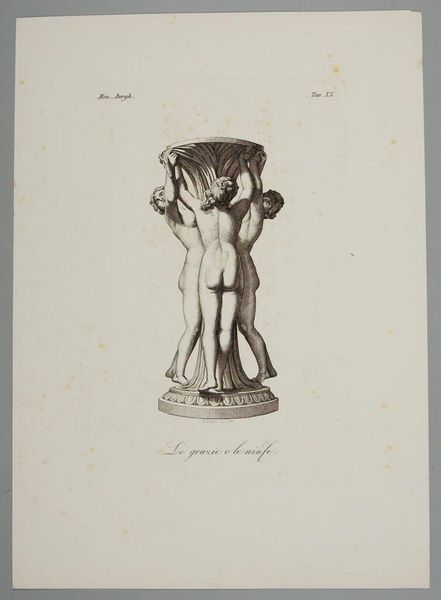
engraving
#
pencil drawn
#
neoclacissism
#
allegory
#
pencil sketch
#
classical-realism
#
pencil drawing
#
nude
#
engraving
Dimensions: height 419 mm, width 540 mm
Copyright: Rijks Museum: Open Domain
Editor: This is Angelo Bertini’s engraving "Naiade," created between 1793 and 1838. It has a very classical feel, and I’m struck by the contrast between the smooth, flowing lines of the figure and the almost harsh, geometric lines of the base she's resting on. What visual elements stand out to you most? Curator: The piece's formal qualities are deeply rooted in Neoclassical ideals, emphasizing clarity of line and form. Notice how the artist uses engraving to achieve a tonal range that mimics the texture and smoothness of sculpture, specifically emulating the style of Antonio Canova. Are you seeing any semiotic relation with its period style? Editor: Yes, the Neoclassical style evokes ideas of order and reason, almost a revival of Greco-Roman ideals... But how does the figure itself play into this? Curator: Consider the reclining pose, the idealized anatomy. This is less about portraying a specific individual and more about embodying an allegorical figure, a naiad—a water nymph. Bertini uses line and form to evoke a sense of timeless beauty. Can you spot the symbolism within the figures to convey the broader idea of the "Naiade?" Editor: There’s a child playing a harp. I can infer how this scene alludes to harmony. Are there some more allegorical elements? Curator: Reflect on how the solid geometric structure represents firmness in shape as its basic structure is more apparent that its delicate composition. Bertini also guides your sight towards an ideal setting that gives significance to that classical sculpture’s visual. Editor: This conversation has refined my comprehension about lines and the figure compositions with visual order through careful assessment of the elements. Thank you for making clear about symbolism, references, and styles in Bertini’s art piece. Curator: A fascinating engagement, bringing new ideas and perspectives about historical content and the use of classical lines for structure!
Comments
No comments
Be the first to comment and join the conversation on the ultimate creative platform.
